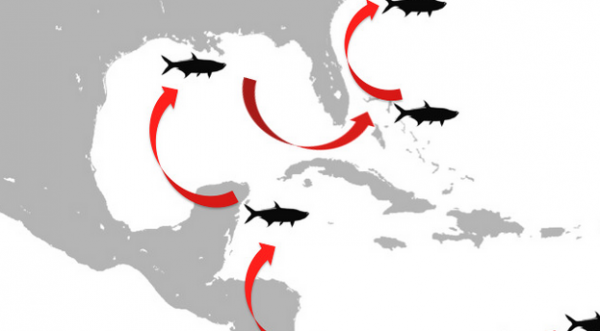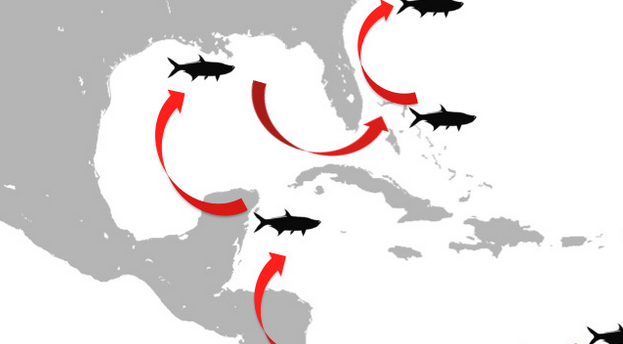Tarpon Genetics Program Results: High Connectivity Across the Atlantic Basin Highlights Need For International Management
By: Dr. Liz Wallace for Bonefish and Tarpon Trust
T[dropcap]T[/dropcap]he Tarpon Genetics Program has concluded, providing illuminating results that will help build effective regional management and conservation plans for tarpon. This two-year collaborative study between BTT and the Florida Fish and Wildlife Conservation Commission (FWC) sought to study how many distinct Atlantic Tarpon (Megalops atlanticus) populations exist, and if more than one existed, where they were geographically located.
Thanks to the efforts of anglers, guides, lodges, and researchers, more than 23,000 tarpon scale samples were collected from all over the world, providing the study with a massive dataset for analysis. Many were collected from Florida waters during the previous FWC Tarpon Genetic Recapture Study, and scales were collected from tarpon in 24 other areas across the Gulf of Mexico, Caribbean Sea, and Atlantic Ocean. Different portions of tarpon DNA were examined to determine if the patterns in each individual tarpon were the same or different from other tarpon. If they were the same, then no matter where the fish were caught, they would be considered part of the same genetic population.

One tarpon population (or stock) exists in the Atlantic Ocean. A combination of adult migrations and larval dispersal, carried in prevailing ocean currents, maintain the high regional connectivity.
How many distinct tarpon populations exist?
Only one! A rigorous and comprehensive suite of statistical approaches was used to analyze the data. The overall level of genetic diversity in the Atlantic tarpon indicated high levels of gene flow (mixing over generations through interbreeding) across the entire region. Fish from Virginia to Louisiana and all across the Caribbean to Brazil displayed shared genetic profiles. Even tarpon samples collected from across the Atlantic Ocean, along the West African coast, shared these profiles. The results reveal that a single Atlantic tarpon stock exists. Although a preliminary study by McMillen-Jackson in 2005 suggested two stocks (West and East Atlantic), our study used a much more extensive dataset and advanced analytical methods to reveal trans-Atlantic connectivity and one region-wide tarpon stock.







